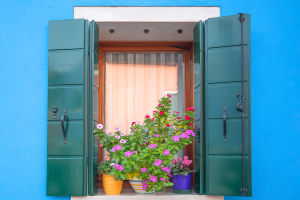Tuscany, spanning approximately 8,900 square miles, stands as a substantial region within Italy, offering an abundance of attractions beyond its breathtaking countryside and the magnificent city of Florence.
Tuscany has fortified hilltop towns, mid-sized cities, picturesque beaches and coves, majestic mountains, tranquil parks, and hot springs. Eager to embark on your discovery, dear Lykkers? Then, let's delve deeper into its wonders!
Best time to visit
Undoubtedly, the optimal time to visit Tuscany is during late spring or early fall, particularly in the months of May and September. During these times, Italy is at its most delightful for travelers, and Tuscany is no exception.
Best Places to Visit in Tuscany
1. Florence
Florence, hailed as one of the most frequented cities globally, is a treasure trove of astonishing artworks and Renaissance-era architecture. Nestled along the banks of the Arno River, Florence served as the canvas for legendary artists such as Da Vinci, Michelangelo, and Botticelli, solidifying its status as an esteemed art hub.
Beyond its elegant palaces, remarkable museums, and ancient churches, Florence boasts a vibrant culinary scene and avant-garde shopping experiences, adding to its allure as a multifaceted cultural destination.
2. Val d'Orcia
Tuscany is celebrated for its undulating hills, and the Val d'Orcia epitomizes this Tuscan essence. Stretching from the hills south of Siena to Mount Amiata, this fertile expanse offers a quintessential Tuscan experience.
Exploring charming medieval towns such as Pienza, Montalcino, and Castiglione d'Orcia is just a glimpse of what the valley has to offer. Leisurely strolls amid olive groves, towering cypress trees, and vineyards make this area an idyllic setting to immerse oneself in Tuscan nature.
The enchanting landscapes of the Val d'Orcia have served as backdrops for numerous cinematic scenes, including those in "Gladiator" and "A Midsummer Night's Dream," underscoring its cinematic allure.
Is Tuscany expensive? Average travel costs
Compared to other regions in Italy, Tuscany tends to be on the pricier side. This isn't surprising given its status as a premier tourist destination, drawing millions of visitors annually.
Here are some estimated expenses:
- Hotel stay: €80 to €150 per night
- Average meal: €15 for lunch specials and €20 to €50 for dinner
- Coffee: €1-€2 at local cafes
- Car rental: €30 per day (potentially higher in peak season or for automatic transmission)
- Taxi ride: €10 to €25 within cities/towns
- Short-distance bus/train ticket: €3 to €10
- Long-distance bus/train ticket (within the region): €10 to €25
- Entrance tickets: €0 to €25, with premier destinations costing around €20
- Bike/E-bike rental: €50 to €100 for the day
- Guided tours:
- Half-day private tour: approximately €250
- Full-day private tour: €400-€600
- Small group tours: €40-€80 per person
Tuscany offers a captivating blend of history, scenery, and cuisine, from the iconic Florence to the picturesque Val d'Orcia. While it may come with a price, the experiences are invaluable. So, pack your bags and immerse yourself in the beauty and culture of this enchanting Italian region. Buon viaggio!


